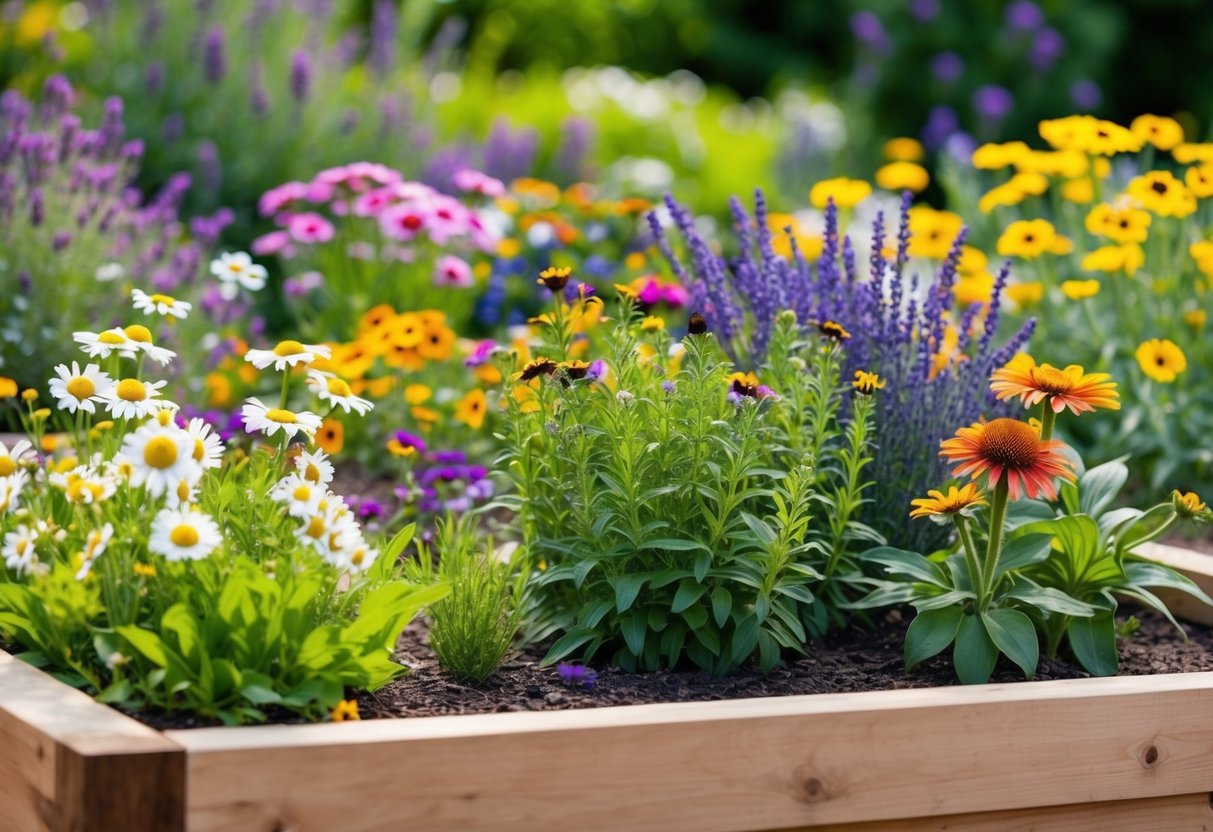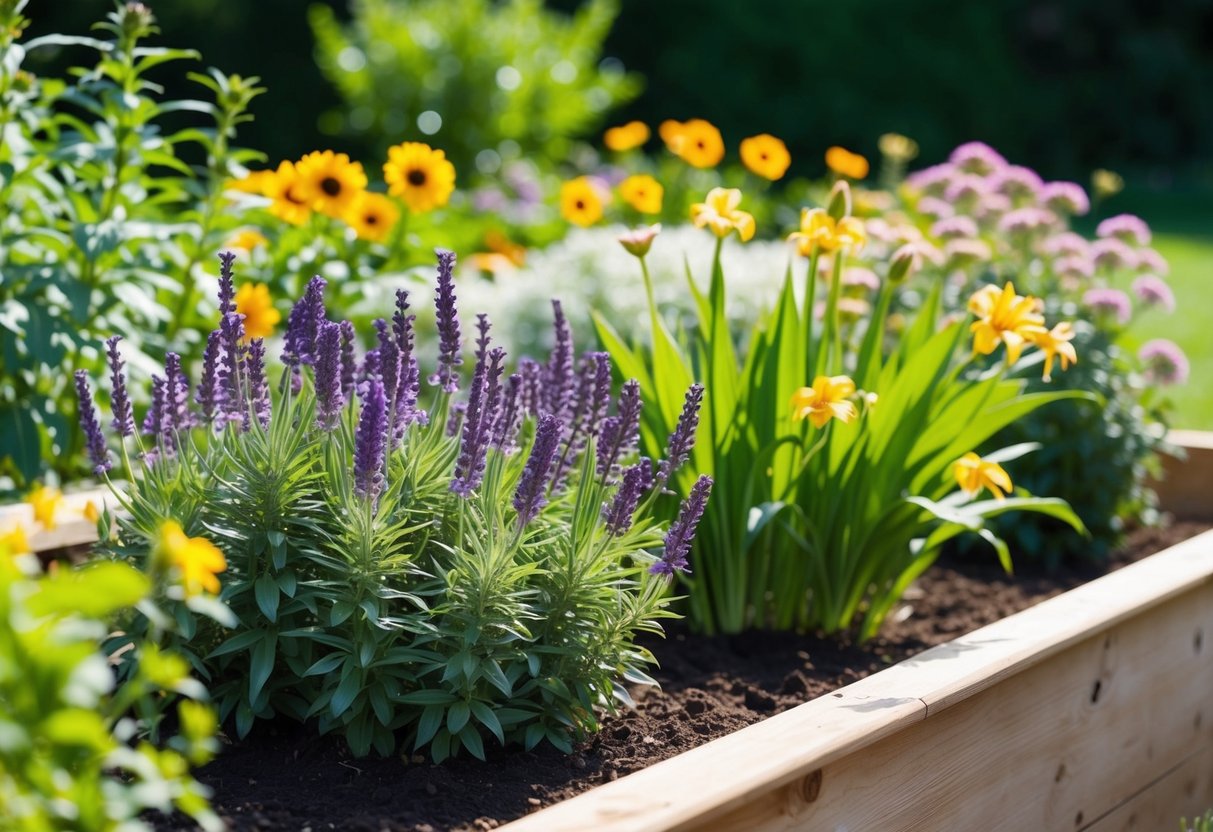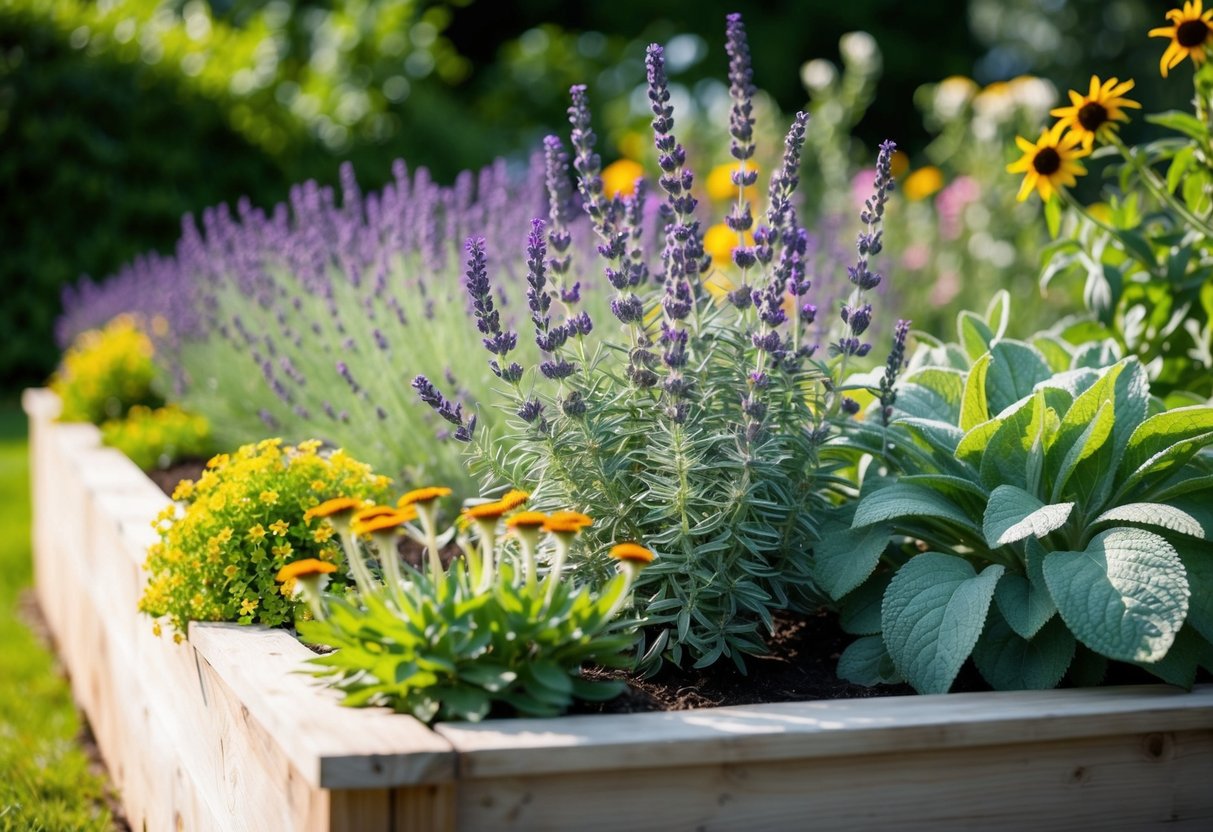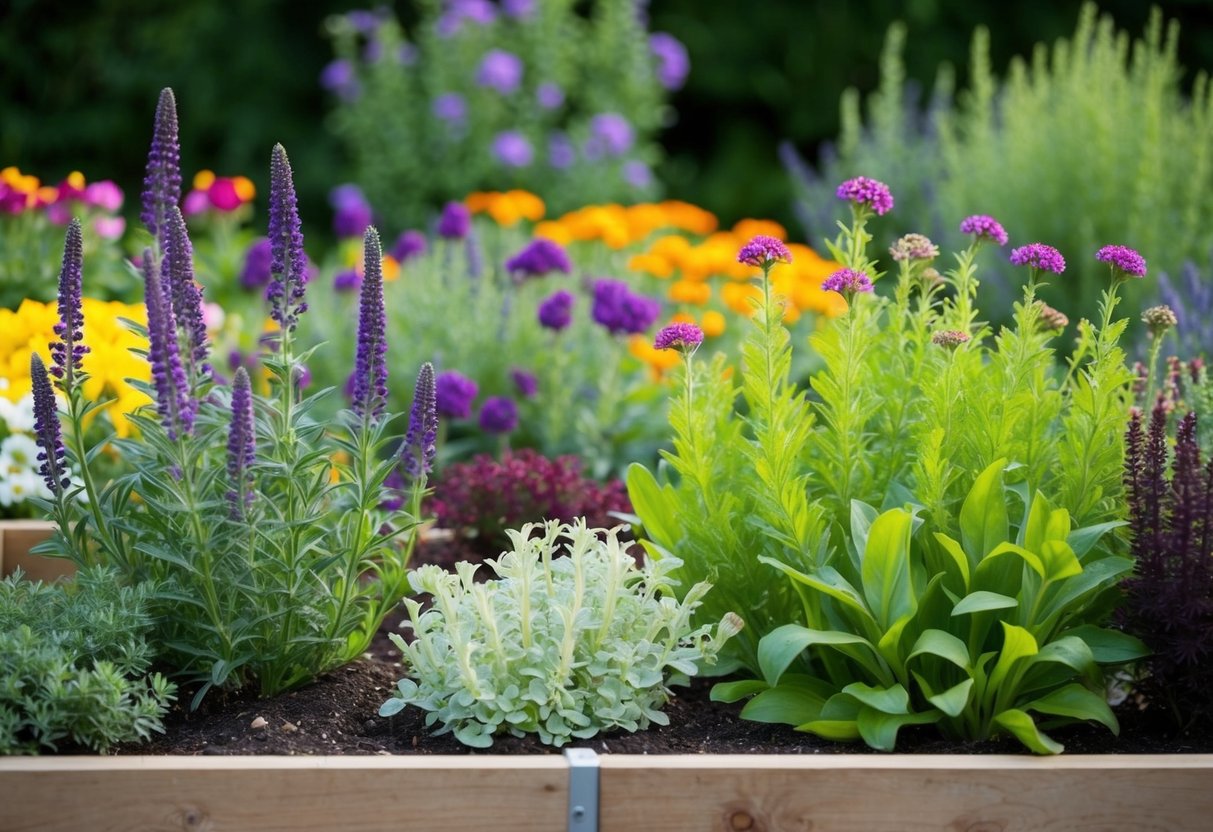What Perennials Grow Well in Raised Beds? Top Choices for Your Garden
When you’re incorporating perennials into your gardening plans, raised beds offer a fantastic solution for many different varieties. These elevated plots can provide great drainage and make tending to your plants easier on your back. Many perennials thrive in raised beds, including lavender, which loves the well-draining soil these structures often have.

You might wonder what makes raised beds so suitable for these plants. The answer is partly in how they give you better control over the soil environment. Gardeners can tailor the soil mix, ensuring that it’s packed with nutrients and the right texture for your favorite perennials. This helps plants adapt well and grow healthier.
As you start planning your layout, consider mixing in flowers that appeal to you. Options like bleeding heart with its heart-shaped blooms can add a unique touch to your space. Raised beds not only help keep these perennials organized but also enhance the visual appeal of your garden.
Choosing the Right Perennials for Raised Beds

Choosing perennials for raised beds requires understanding your garden’s conditions like sunlight, soil type, and water needs. It’s crucial to pick plants that thrive in your specific environment to ensure healthy growth.
Assessing Sunlight and Shade
Understanding the sunlight and shade your garden gets is important for selecting the right perennials. Some plants need full sun, which means they should be in direct sunlight for most of the day. Flowers like daylilies and lavender do well in sunny spots. If your bed is in partial shade, hostas or bleeding hearts are great options, thriving with less sunlight.
Keeping a chart of sunlight patterns can help you plan where to plant specific perennials. Additionally, you can use structures like trellises to adjust shading and sunlight in your raised bed. This can provide more flexibility when deciding what to plant.
Considering Soil Conditions
Raised beds often have well-draining soil, which is suitable for many perennials. If your soil tends to be heavy clay, you should improve drainage by adding organic matter like compost or peat moss. This helps roots get the air they need to grow strong.
Some perennials, such as Black-eyed Susans, prefer well-draining soil and will struggle in soggy conditions. Testing your soil can guide you in making necessary amendments to create the ideal environment for your plants. It’s key to match your soil type with the needs of your chosen perennials for a flourishing garden.
Selecting Drought-Tolerant Varieties
In areas where water conservation is a priority, choosing drought-tolerant perennials is wise. Plants like yarrow and echinacea can handle dry spells and still look beautiful. These types typically have deep root systems that help them access water, even in dry periods.
Consider grouping your drought-tolerant plants together. This can make it easier to manage their care and ensure they all receive the appropriate amount of water. By planning carefully, you can create a garden that is both low-maintenance and stunning, even under challenging conditions.
Popular Perennials for Raised Gardens

Perennials are a fantastic choice for raised gardens because many varieties can thrive in these controlled environments. In this section, we will explore flowering perennials that are known to attract pollinators and foliage-focused perennials that provide texture and color to your garden.
Flowering Perennials That Attract Pollinators
Adding flowering perennials to your garden is a great way to draw in beneficial insects like bees and butterflies. For instance, the coneflower brings vibrant purples and pinks while attracting pollinators with its nectar-rich blooms. Similarly, the black-eyed Susan is not only beautiful with its golden-yellow petals, but also a magnet for bees and butterflies.
The buddleja davidii, or butterfly bush, is another excellent choice. It offers long, fragrant flower spikes that attract a variety of pollinators to your garden. Salvia and rudbeckia can also enhance the beauty of your raised beds while supporting local ecosystems. Consider mixing these perennials for a colorful and lively garden area that buzzes with life.
Foliage-Focused Perennials for Texture and Color
Foliage-focused perennials add depth and interest to your garden beyond flowers. Hostas are popular for their lush, broad leaves and thrive in shaded areas. They’re available in various shades of green, blue, and even variegated patterns. Another exciting choice is the coral bells. These come in a range of leaf colors from purple to bronze, providing a visual interest even when not in bloom.
Ornamental grasses add movement and a subtle elegance to any garden space. Varieties like yarrow and bleeding heart also bring unique leaf shapes and colors. By incorporating these plants, you can create layered textures that make your garden visually captivating throughout the seasons.
Maintaining Perennials in Raised Beds

Keeping perennials healthy in raised beds requires consistent care. You should pay attention to watering, pruning, and feeding your plants with the right nutrients to ensure their growth and beauty.
Watering and Soil Moisture Management
Watering perennials in raised beds involves maintaining the right balance of soil moisture. Raised beds have increased drainage, so you may need to water more often than if the plants were in the ground. Deep watering encourages roots to grow deeper, which helps the plants survive drier periods.
Use a layer of mulch around your perennials to retain soil moisture and prevent weeds. This helps in regulating soil temperature, which prevents stress on the plants. Check the soil regularly; it should feel moist but not soggy. Adjust your watering schedule based on weather conditions and plant needs.
The Importance of Pruning and Deadheading
Pruning is critical to maintaining healthy perennials. It helps promote new growth, improves airflow, and keeps plants looking tidy. Focus on removing any dead or damaged stems. Always use sharp, clean tools for pruning to avoid damaging the plants.
Deadheading is also important for perennials. By removing spent blooms, you encourage the plant to continue producing flowers. This not only enhances the appearance of the plants but also can extend the blooming season. Regularly checking your plants and removing dead or dying flowers will keep them thriving.
Fertilizing and Adding Organic Matter
Proper fertilization is essential for perennials to grow well. Using compost or well-decomposed organic matter can enrich the soil in your raised beds. Spread a layer of compost around your plants in the spring to provide nutrients.
You may also choose to use a balanced, slow-release fertilizer to ensure ongoing nutrient supply. How much to use will depend on the types of perennials and the specific nutrient needs of your soil. Talk to a garden center professional if you’re unsure. Adding organic matter not only feeds your plants but also improves the soil structure over time, ensuring healthy growth.
Combating Challenges in Raised Bed Perennial Gardening

In raised bed perennial gardening, focusing on improving soil quality, protecting plants from root issues and pests, and integrating companion planting can lead to a more vibrant and sustainable garden.
Dealing with Soil Quality Issues
Improving soil quality is crucial for healthy plants. Use well-draining soil mixed with compost to retain moisture. Avoid using garden-variety soil, as it may compact in the beds. You can add organic matter to enhance fertility. Consider using a specialized soil mix with high drainage and moisture retention. This helps in promoting root growth and provides the nutrients your perennials need. Regularly test your soil’s pH and nutrient levels. Adjusting these elements ensures that your plants thrive without extra intervention.
Preventing Root Rot and Pests
Root rot and pests can be persistent problems in raised beds. To minimize root rot, ensure your beds have proper drainage, as excess water can suffocate plant roots. Choose raised beds that are lower to the ground or insulate them during colder months to reduce freezing risks. For pest control, consider using natural barriers or beneficial insects for protection from pests. Floating row covers and organic pesticides are also helpful options. Regularly inspect your plants for signs of damage or disease, removing affected areas immediately.
Integrating Companion Planting
Companion planting is a smart strategy to enhance plant growth and reduce pests. Certain plants, when grown together, can boost each other’s growth and provide natural pest control. For example, pairing marigolds with vegetables can deter nematodes, while planting garlic near roses can repel aphids. By strategically placing compatible plants, you can foster healthier ecosystems within your raised beds. Furthermore, companion planting can lead to fewer weeds by shading out unwanted growth. This approach creates a more balanced and resilient garden environment, allowing your perennials to flourish without chemical interventions.
Innovative Ideas for Perennial Raised Bed Design

In raised garden beds, mixing design and plant choices can greatly enhance your garden‘s look and function. Consider incorporating structural elements and layering for continuous blooms to make your garden more accessible and visually appealing.
Incorporating Structural Elements
Adding structural elements in your raised beds can make a big impact. Imagine using trellises to support a flowering vine which adds vertical interest. This not only saves space but also draws the eye upwards.
Garden statues or ornaments can also add a touch of personality. Place these strategically among flowering shrubs to introduce variety to the landscape.
Raised beds themselves are a structural element, helping improve accessibility. They can make it easier for you to tend to perennials without needing to bend over too much.
Borders made from materials like stone or wood can frame the beds beautifully and keep everything contained. These elements not only serve practical purposes but also enhance the visual layout of your garden.
Layering Perennials for Continuous Bloom
Layering is a great way to ensure that your garden is always bursting with color. Choose perennials with different blooming times to maintain interest throughout the seasons.
For early blooms, consider planting tulips or daffodils. These can be followed by daylilies and coneflowers to take over as summer arrives.
Incorporate flowering shrubs like hydrangeas for lush summer displays, while asters or chrysanthemums can provide a splash of color as fall approaches.
Think about mixing tall and short plants. Tall plants can go towards the back, while shorter ones can be placed near the front of the raised beds. This way, each plant gets the sun it needs and your garden remains vibrant all year round.







